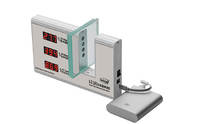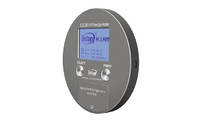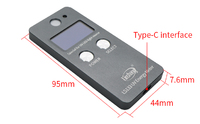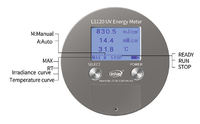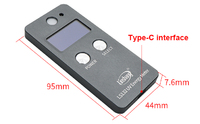LS180 window film transmission meter
Product Quick Detail
- FOB Price
- USD $190.00 / Piece
- Minimum Order
- 1
- Place Of Origin
- China(Mainland)
- Packaging
- 1 pc each box
- Delivery
- 4 Days
Specifications
LS180 Solar Film Transmission Meter Introduction
Linshang LS180 solar film transmission meter uses a parallel light path design, which is suitable for measuring various solar films, stick-film glass, architectural film, architectural glass and
other materials. The window tint detector can test three values at the same time, namely ultraviolet rejection rate, infrared rejection rate and visible light transmittance. The meter has high data
accuracy and is not affected by the location of the sample. The operation and reading are very simple.
LS180 Solar Film Transmission Meter Working Principle
The testing principle of the LS180 window tint detector is to irradiate the transparent material with an ultraviolet light source, an infrared light source and a visible light source. Then use the
senor on the other side to detect the incident light intensity of the three light sources and light intensity after passing through the material. The ratio of transmitted light intensity to
incident light intensity is the transmittance, expressed as a percentage. Most solar film parameters will be marked with three indicators, namely visible light transmittance, infrared and
ultraviolet rejection rate, where the rejection rate = 100% -transmittance.
The LS180 three-display solar film tester is an instrument that directly measures and displays ultraviolet rejection rate, infrared rejection rate, and visible light transmittance, which is more
convenient for users to read and understand.
- Country: China (Mainland)
- Founded Year: 13
- Contact: lin shang

